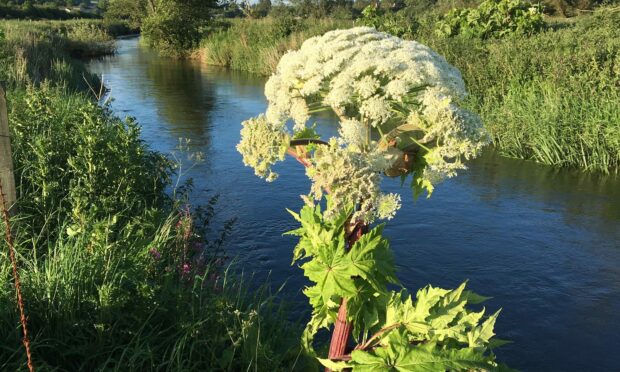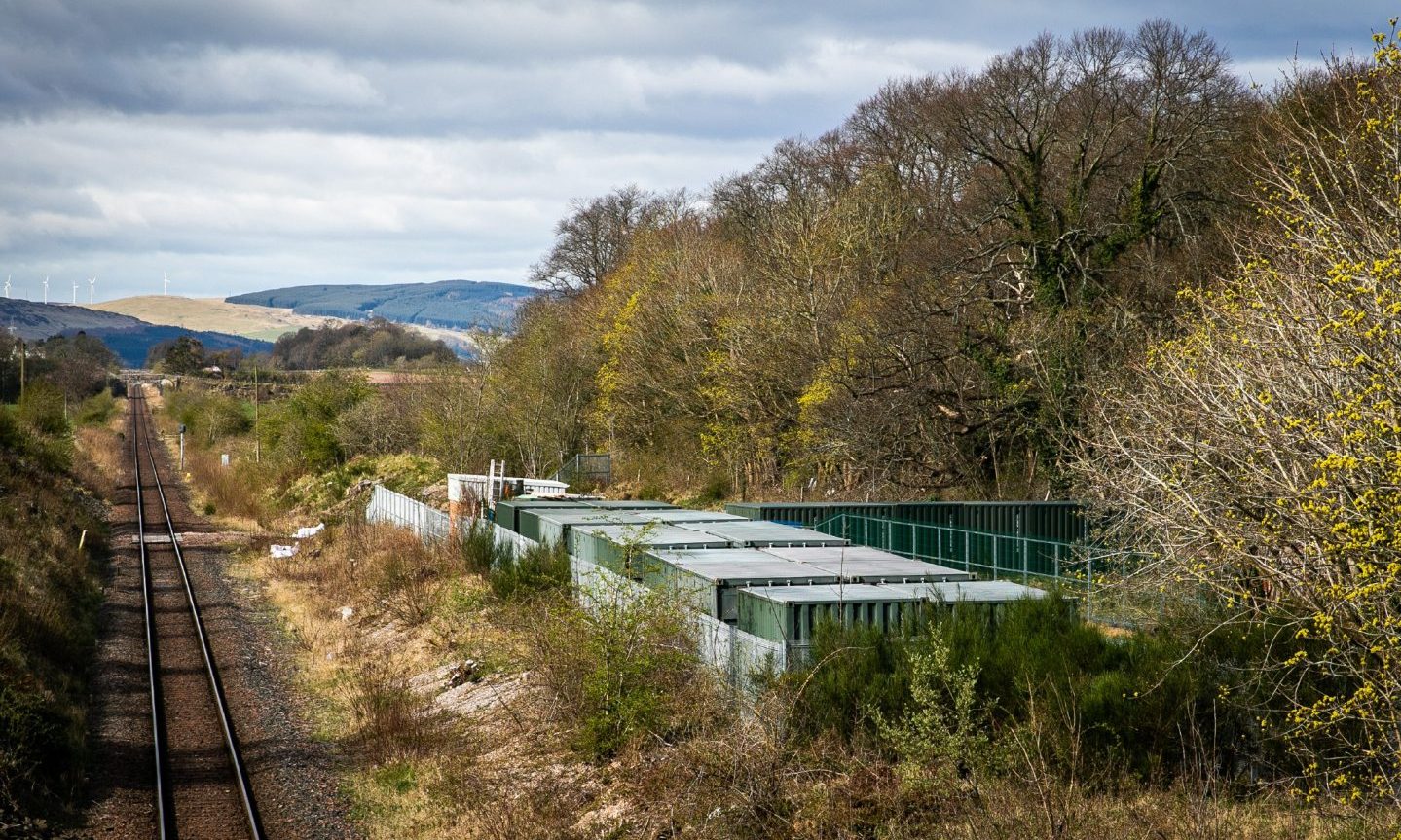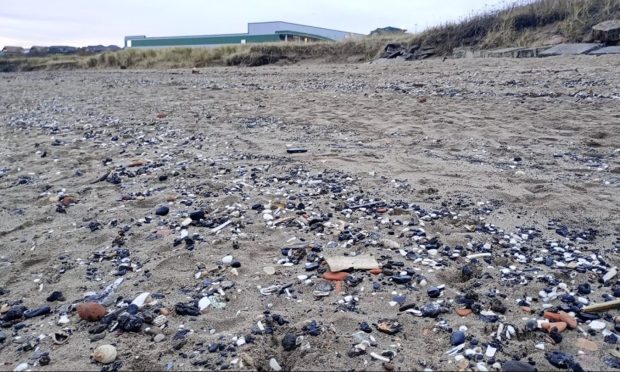Walkers have been urged to avoid a toxic weed which can cause severe burns and is thriving around Fife.
Giant hogweed, which can grow to around 20ft tall, can cause blisters which last for months if even a tiny amount of sap comes into contact with skin.
It is known to have spread throughout the region, recently spotted in locations including the bank of the River Eden in Cupar and close to Kirkcaldy promenade.
Cupar councillor Margaret Kennedy urged people to avoid the plant if they see it and keep children and animals away.
She said: “People cannot afford to get any of this on their skin.
“They should stay away from areas where giant hogweed is growing and report it. If people are walking dogs there’s also the risk that the sap could be transferred to them from the dog’s fur.”
Giant hogweed has been a long-running problem along the Eden but it is understood a bid for funding for a project to tackle it failed.
Fife Council said the land by the Eden where the plant is growing is privately owned so it had no responsibility but Ms Kennedy said she would seek advice on what could be done.
She said: “If it’s private land we have no locus unless it’s interfering with public safety but we should at least be approaching the landowner.
“Whether a private landowner or a public body, we all have a shared interest in getting rid of this stuff.”
Giant hogweed is one of a number of invasive non-native species which cause problems in the UK.
Japanese knotweed can cause structural damage to buildings and can cost householders thousands of pounds to get rid of.
It recently cost up to £100,000 to remove it from council development sites in Cowdenbeath and Dunfermline, holding up work.
Himalayan balsam can cause erosion, destroy riverbanks and impede water flow, increasing the likelihood of flooding.
Scottish Natural Heritage is the co-ordinating body for invasive non-native species on land and can provide advice on controlling it.
Its non-native species expert Stan Whitaker said: “Landowners are responsible for controlling giant hogweed or other invasive non-native plants on their land. For example, a local council would control Himalyan balsam if it was on council land.
“However, there’s no legal obligation to control it. SNH’s role is to provide advice and raise awareness.
“There is also new legislation which makes it an offence to introduce a non-native invasive species, and this is one of our main aims as well, to stop people bringing invasive non-native plants into Scotland in the first place.”
Sightings of invasive non-native species in Fife can be reported to Fife Nature Records Centre by visiting www.fifedirect.org.uk/nature .










